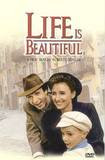Morgen and I went to Dan's today after I picked him up from school and the cashier that is usually there rang up his ice cream. After she handed me my change, she said, "Thanks have a great day." As we were walking back out to the car Morgen said, "Did you notice how that lady said "Hello, how are you today?" but with no expression on her face?" I had to laugh because I actually had noticed the same thing about her a couple of times but didn't say anything about it. Morgen went on to say that it is interesting to read people's faces when they say things and see if they have any meaning behind them. He has had an unusually perceptive personality from the time he was young. Almost contemplative I guess. This is one of my favorite pictures of him when he was almost 4 years old. There is just something about the look in his eyes... like they are searching your soul.
In philosophy, psychology, and the cognitive sciences, perception is the process of attaining awareness or understanding of sensory information. The word "perception" comes from the Latin words perceptio, percipio, and means "receiving, collecting, action of taking possession, apprehension with the mind or senses." What one perceives is a result of interplays between past experiences, including one’s culture, and the interpretation of the perceived.
Two types of consciousness are considerable regarding perception: phenomenal (any occurrence that is observable and physical) and psychological. The difference everybody can demonstrate to him- or herself is by the simple opening and closing of his or her eyes: phenomenal consciousness is thought, on average, to be predominately absent without sight. Through the full or rich sensations present in sight, nothing by comparison is present while the eyes are closed. Using this precept, it is understood that, in the vast majority of cases, logical solutions are reached through simple human sensation.
The analogy of Plato's Cave was coined to express these ideas.
In the case of visual perception, some people can actually see the percept shift in their mind's eye. Others, who are not picture thinkers, may not necessarily perceive the 'shape-shifting' as their world changes. The question, "Is the glass half empty or half full?" serves to demonstrate the way an object can be perceived in different ways.
Just as one object can give rise to multiple percepts, so an object may fail to give rise to any percept at all: if the percept has no grounding in a person's experience, the person may literally not perceive it.
The processes of perception routinely alter what humans see. When people view something with a preconceived concept about it, they tend to take those concepts and see them whether or not they are there. This problem stems from the fact that humans are unable to understand new information, without the inherent bias of their previous knowledge. A person’s knowledge creates his or her reality as much as the truth, because the human mind can only contemplate that to which it has been exposed. When objects are viewed without understanding, the mind will try to reach for something that it already recognizes, in order to process what it is viewing. That which most closely relates to the unfamiliar from our past experiences, makes up what we see when we look at things that we don’t comprehend.
Preconceptions can influence how the world is perceived. For example, one classic psychological experiment showed slower reaction times and less accurate answers when a deck of playing cards reversed the color of the suit symbol for some cards (e.g. red spades and black hearts).
skip to main |
skip to sidebar












The rest is still unwritten
Hi there
I love...
- three little boys
- music
- bike riding
- cooking
- birthdays
- flip flops
- fall
- going dancing
- swimming
- oatmeal
- flowers
- reading
- organizing
- my mom & dad
- cookie dough
- surprises
- genuine people
Site Seeing
BB Remembers
-
▼
2009
(382)
-
▼
November
(32)
- Time after Time
- Ortho
- Team Lightning
- Running
- Dentist
- Beanz
- Hanging out
- My Mom's Birthday
- Days and Knights
- First Strike
- Enjoy the Ride
- Outdoorsman
- Craft Night
- Take a shot
- Road Home
- What I do all day
- Perception
- From Nicole
- Birthday Dinner
- Carnage
- 3 games and a movie
- Playing
- Monet's Birthday Dinner
- First Feast
- Aquarium
- Give Thanks
- Overnight
- City Championships
- Thanksgiving Shoot-out
- Lightning Strikes Again
- Playoffs
- Teaching
-
▼
November
(32)

What I'm doing at the moment...
Watching:













